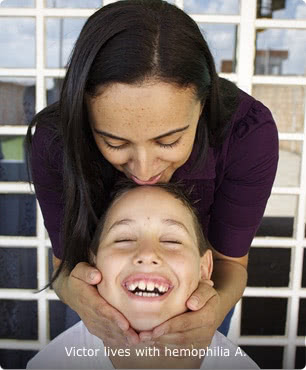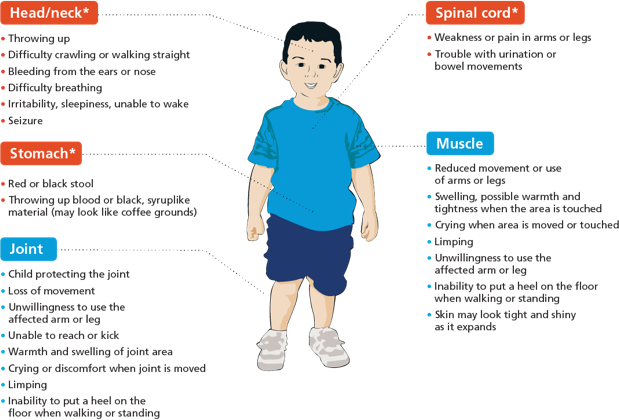Here you’ll find information to help you live more successfully with hemophilia. From staying active and healthy to managing bleeds, it’s all easier when you know what to do and are prepared to do it.
Tips to help you navigate your hemophilia journey.
Tips to help you navigate your hemophilia journey.
Here you’ll find information to help you live more successfully with hemophilia. From staying active and healthy to managing bleeds, it’s all easier when you know what to do and are prepared to do it.
Caring for children with hemophilia.
Caring for children with hemophilia.
When a child is diagnosed with hemophilia, their caregivers take the lead in keeping them safe and healthy. Learn how to spot bleeds and share this important information with others who help care for your child.
Recognizing bleeds in infants and young children.
Recognizing bleeds in infants and young children.
When a child can’t tell you where it hurts, it’s important to check for bleeds every day. Look for changes in your child’s joints during diaper changes, at bath time, and while dressing your child. Comparing one knee, elbow, or ankle to the other may help you notice any changes.

Signs of bleeding.


Watch for:
Bruising, with or without lumps
Swelling
Difference in the size of arms/legs
Difference in movement of arms/legs


Feel for:
Warmth
Swelling
Tenderness over joints and muscles


Be alert to:
Crying or discomfort when picked up
Unsettled behavior for no apparent reason
Difficulty rolling, crawling, standing, or reaching for objects

*NOTE: Bleeds are especially serious in head, neck, spinal cord, and stomach. If your child has these symptoms contact your doctor immediately.
*NOTE: Bleeds are especially serious in head, neck, spinal cord, and stomach.
If your child has these symptoms contact your doctor immediately.
*NOTE: Bleeds are especially serious in head, neck, spinal cord, and stomach. If your child has these symptoms contact your doctor immediately.
*NOTE: Bleeds are especially serious in head, neck, spinal cord, and stomach.
If your child has these symptoms contact your doctor immediately.

Children with hemophilia will grow out of it.

Hemophilia is a lifelong condition, a bleeding disorder caused by the absence of an essential blood clotting protein that has no cure.

Children with hemophilia will grow out of it.


Hemophilia is a lifelong condition, a bleeding disorder caused by the absence of an essential blood clotting protein that has no cure.
What to share with your child’s school, day care, or babysitter.
What to share with your child’s school, day care, or babysitter.
Sending your child to school, day care, or a babysitter can be a bit more complex when they have hemophilia. But with a little preparation, the right plan, and clear communication, you can help your child be safer, no matter where they go.
Tips for starting the conversation with caregivers.
First, talk with your child’s school or day care staff and babysitters about what it means to have hemophilia. You might mention that:
Children with hemophilia do not bleed faster than normal; it’s just harder to stop their bleeding
Your child can still play and have fun
For a child with hemophilia, simple bumps and cuts sometimes need special attention
Caregivers should pay attention for signs of bleeding, which can occur on either the outside (a cut) or the inside (a bruise) of the body
Tell caregivers exactly what they need to look out for and when they should alert you to a possible problem.

Caregivers should suspect a bleed if your child:
Has pain or swelling
Walks with a limp
Has difficulty waking up or no energy
Uses a different hand for eating or picking things up
Using 2 hands instead of just 1
Is crying without any reason
Has warmth in a joint or muscle
Complains of numbness or tingling

If your child has a bleed, caregivers should:
Stay calm and call you, another parent, or other authorized adult immediately
Keep your child calm
Offer a comfort item, like a toy or blanket, until your child can be picked up by an authorized adult
Moving through life.
Learn how to transition through various stages of life with hemophilia, from self-infusing to going to college.
Building community.
Get tips on building a strong support system—an important component of living with hemophilia.
Moving through life.
Learn how to transition through various stages of life with hemophilia, from self-infusing to going to college.
Building community.
Get tips on building a strong support system—an important component of living with hemophilia.
